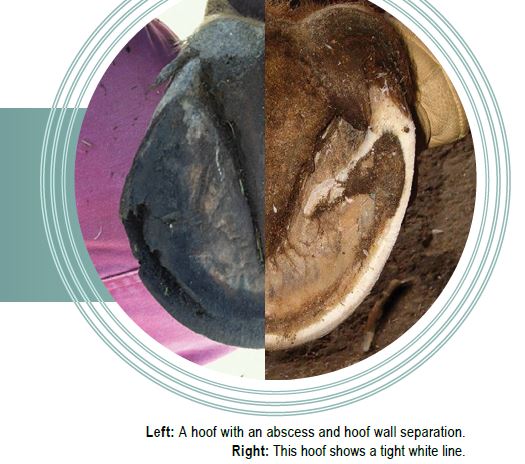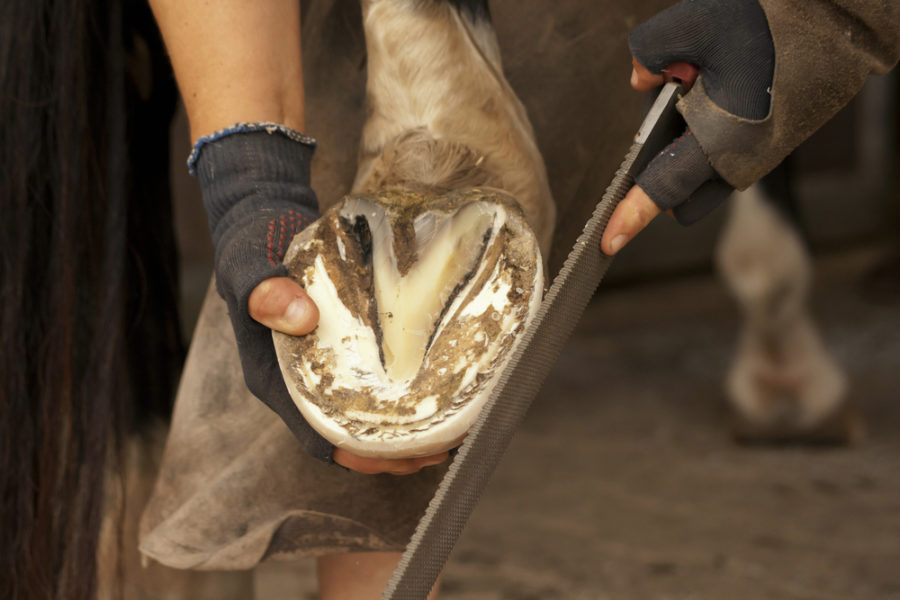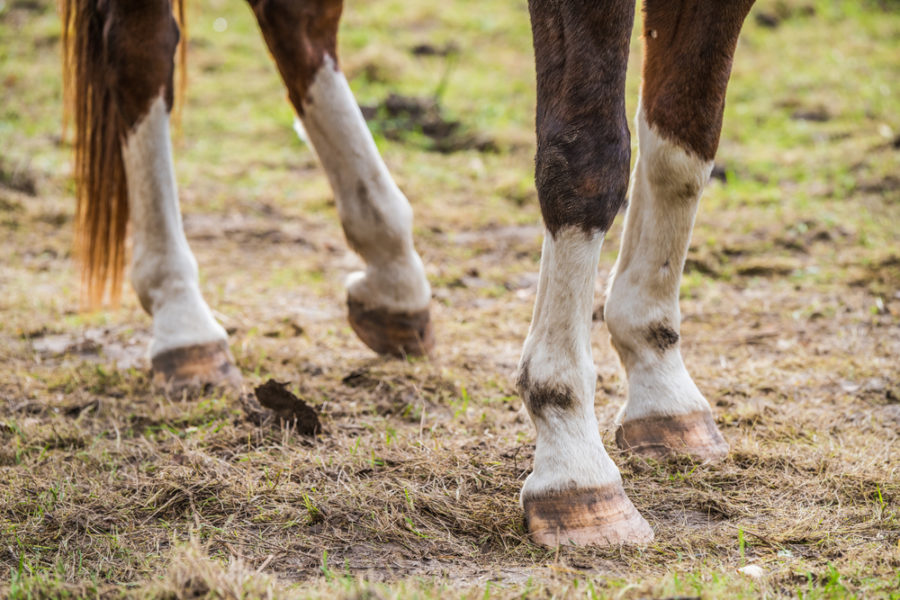White line disease can become quite severe if steps aren’t taken to eradicate it, so understanding what it is and how to prevent it is critical.
Seedy toe, otherwise known as white line disease, is a type of infection that affects the hoof. This condition involves bacterial and fungal invaders, and is caused by other hoof pathologies.
A closer look at white line disease
In a healthy hoof, the walls are tightly connected to the coffin/pedal bone by the laminae. The hoof wall has two distinct layers. The outer wall grows down from the coronary band – it is thick and strong. The inner wall is produced by the laminae and this attaches the outer hoof wall to the coffin/pedal bone. It is this thinner layer that is susceptible to bacterial and fungal infections, such as seedy toe and white line disease.
The end of the laminae is called the “terminal papillae” and that produces the white line. The white line is the connection between the sole and the inner hoof wall, as depicted below.

What causes it?
Contrary to the name, white line disease does not infect the white line. It manifests in the inner hoof wall, and is typically caused by a combination of factors. Hooves subjected to wet conditions seem to be more prone to infections, though horses in dry conditions can also suffer.
The bacteria breaks down the keratin of the inner hoof wall. There are a number of ways this bacteria gets in, all relevant to poor hoof mechanics – more specifically, flaring of the hoof wall and long toes. The flaring stresses the connection between the hoof wall and the sole and, in turn, causes the wall to separate. Once this happens, the hoof will crack and split, and is then open to infection.
If the walls grow too long, the connection between the hoof wall and bone is compromised. It is vital that after every trim, the lower outer wall is rasped to remove the flare and the perimeter of the hoof wall should be beveled. In addition, the hoof should never be trimmed flat as this encourages peripheral loading of the hoof wall, which produces flare.
Laminitic horses are especially prone to seedy toe as the inflamed laminae forms a weak connection between the hoof wall and the coffin/pedal bone. Then there is the problem of the hoof being unbalanced. Excess pull from a long hoof wall can tear the wall from the coffin/pedal bone and in time will exacerbate until the white line stretches.
Ways to avoid white line disease
All the above factors make the hoof susceptible to bacteria and fungi. Appropriate equine management and regular, proper barefoot trims will lessen the possibility of these infections. Bacteria cannot manifest in a healthy hoof. If there is a strong attachment between the hoof wall and the coffin/pedal bone then the horse will have a healthier, stronger hoof overall.





